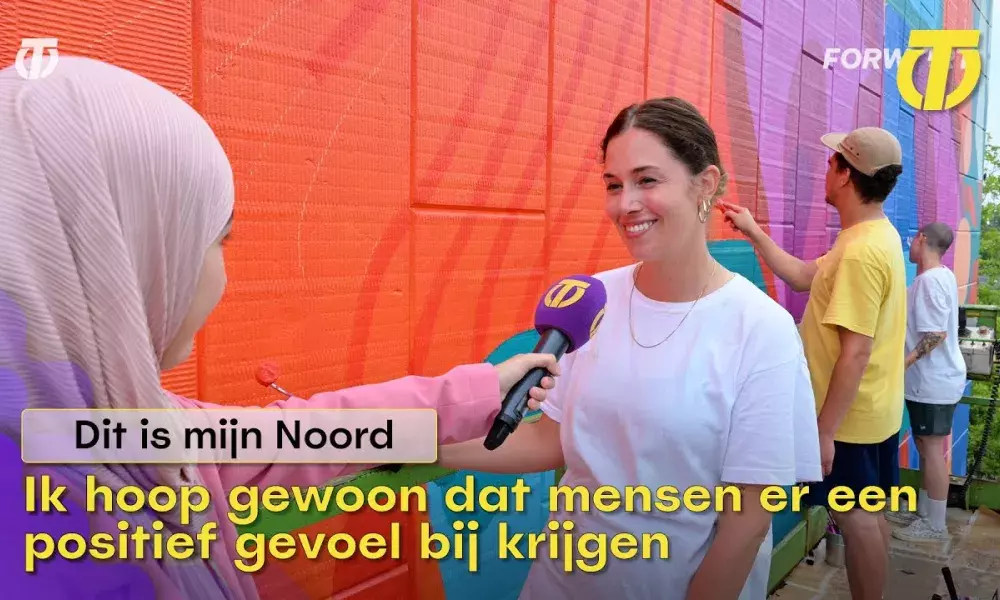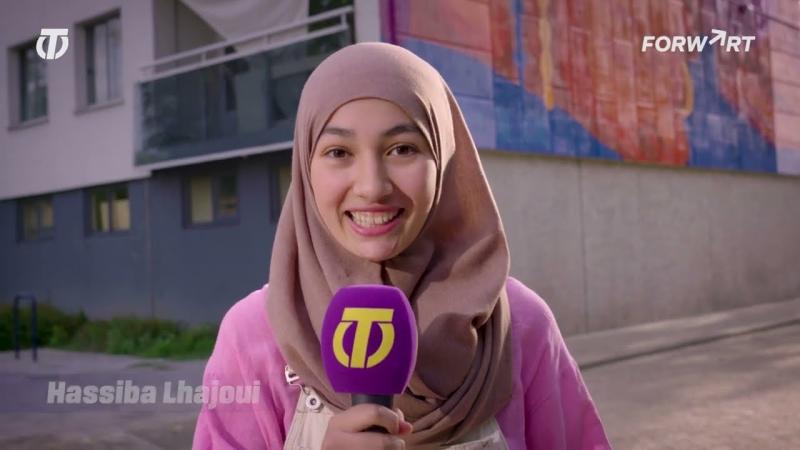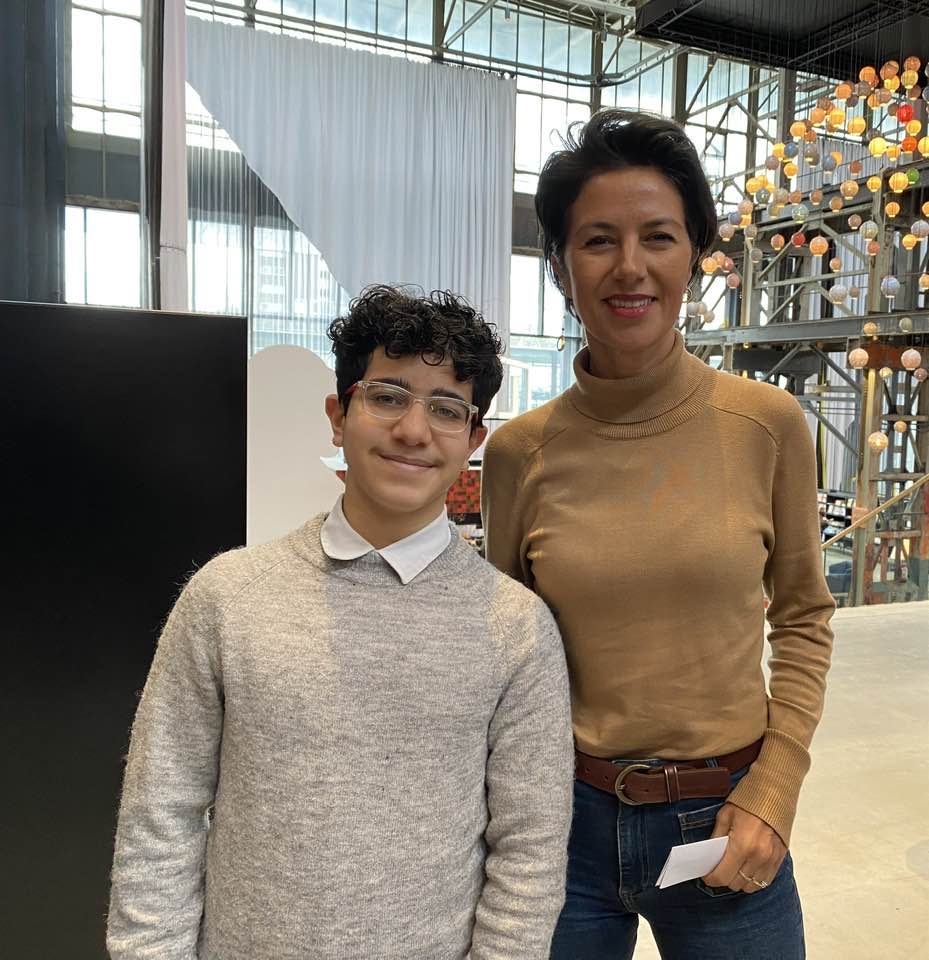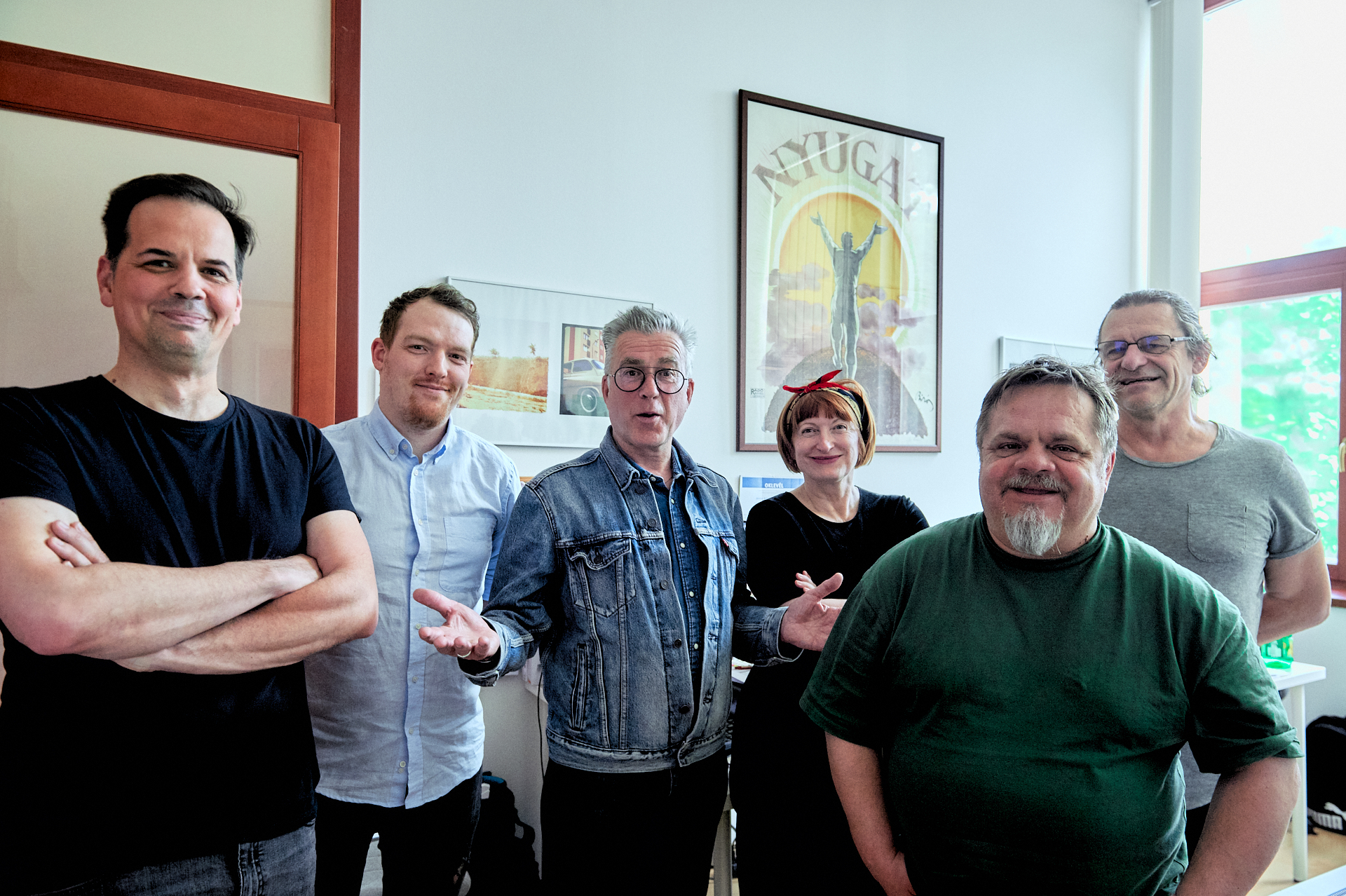
The methodology to engage youth from fragile neighbourhoods to report on their daily issues will be taught all over Europe. Omroep Tilburg, a strong partner in the ForwArt partnership has initiated a Creative Europe partnership with local media organisations from Belgium, Hungary, Ireland, Malta, Serbia, and Slovenia to empower local youth. They will become the eyes and mouth of their own neighbourhoods as citizen journalists. Youth will not only boost their media related skills but will at the same time engage in local policy issues and will transform local policies to be digestible for younger generations. A must for a strong, democracy in Europe.
Local media outlets against the stream of global media consumption
Research by the Dutch Media Authority (Digital News Report Netherlands, 2021) shows that 90 percent of young people between 18 and 24 use social media to read news. Young people actively engage with news, spreading news or commenting on it. However, it also appears that young people are not or hardly interested in local media and local news, while an older target group is interested in news from the immediate surroundings.
Local media services are losing ground across Europe. Over the course of the last few decades, and more recently exacerbated by the COVID-19 pandemic, traditional media services have struggled to maintain both their financial security and their thematic independence. Furthermore, media consumption is increasingly online – allowing it to be more national/worldwide in scope – whereas local media consumption is mostly confined to more traditional forms of media (e.g., printed newspapers). In fact, according to the EU’s Digital Media Plan “the proportion of readers accessing news from smartphones has risen from 39% in 2014 to 48% in 2020”, and in many ways independent journalism has been “drowned out” by the rise and algorithmic powering of other kinds of content, including disinformation, hate speech, and conspiracy theories. Though local media outlets have tried to combat the spread of disinformation and broaden their outreach by engaging in social media content production, they are unable to keep up with the fast-paced digital sphere and continue to see a decline in their viewership.
Research shows that young people are more concerned with the larger problems in this world such as climate and racism and less with issues that play a role at the local level. Young people feel more like world citizens and identify less with the municipality they live. As a result, they are less interested in local politics. Additionally, smaller, local issues are often not reported on in the national media meaning that local politicians are less accountable for their actions. Voters then make less informed decisions, as they lack the knowledge to decide if the incumbent did their job well, or if the challenger has a viable alternative plan. This also translates into a decrease in media diversity due to an increase in centralisation within the media landscape. This is especially concerning in member states where media freedoms are already endangered.
Local independent media are the stronghold for local democracy
Local media and news are important for maintaining local democracy in a local society. Local media inform citizens about local democracy so that, for example, they can vote for a political party or take part in discussions about local social issues. This keeps citizens well informed and keeps local politicians on their toes. In addition, local media stimulate social cohesion within a particular neighbourhood or between groups with different origins.
The diversity of local media outlets become even more significant issues because local media — and in turn, local policy issues — are not reaching the youth population. Young people today are living more and more in global communities and although they are very active in global political issues (e.g., climate change), they are less active in their own local communities. While local media is viewed as the bridge between local issues and community members, it is largely underperforming in its role of strengthening democratic values and serving community goals, such as inclusion, diversity, and freedom of speech, especially within the younger generations.
Overall, the decline of local media and of youth engagement has led to a decline in the legitimacy of local democracies. More specifically, localities are losing out on crucial youth voices that could help shape the future of their local communities. As more and more vulnerable and disenfranchised youth populations remain unaware of the importance of local politics and local issues of general interest in their day-to-day lives, the gap between youth engagement and local democracies will continue to widen— which is not good for the wellbeing of any community.
ForwArt working for youth engagement through citizen journalism
Omroep Tilburg is the local public media institution in the municipality of Tilburg and a strong partner of the ForwArt project. Omroep Tilburg media is made by, with, and for Tilburg residents– and it firmly believes that it is the voice of the city that makes Tilburg sound as it is. Within ForwArt Omroep Tilbug created and experimented with the T-Reporter concept.
"In Tilburg, we started 'T-reporters' three years ago. This is a diverse group of young people who make journalistic items under the guidance of the broadcaster. "As a broadcaster, we see in this way what concerns young people, and we teach them to look differently at their immediate environment." says Pieter Bon head of the board for Omroep Tilburg. T-reporters stand for Tilburg reporters as a form of citizen journalism especially advocated and coordinated among the youth of Tilburg.
For instance, the reporters delve into local topics such as municipal politics, but also learn to translate 'world news' into local news. Because the young people get to work as reporters themselves, they really creep into the role of journalist.
Currently, 15 T Reporters are active in the ForwArt project in Tilburg Noord, a project in which art and cultural interventions should stimulate the personal development of young people. ForwArt explores, discovers, develops, supports and displays talent under the motto: 'Moving forward with the power of art; from a place to hide to a place of pride'. In addition, T Reporters are trained within the subject Technology & Application as part of the curriculum of an institution for preparatory vocational secondary education (Cobbenhagenmavo) in North.

T-Reporters can perform different media related roles. They can work as a reporter, cameraman/woman or as an editor. The program begins by introducing them to the basics of journalism and basic technical knowledge and skills for making media. They go straight into practice under the motto of 'learning by doing'. They are guided by professionals of the broadcaster. The self-made media material is the starting point of the learning process. Material is reviewed together and fine-tuned where necessary. In the ForwArt project the emphasis lies on making videos. The subjects they want to deal with they propose themselves or are suggested by the ForwArt project management.
Applying more inclusive and engaging journalism techniques, such as the introduction of youth community reporters into the everyday work of media agencies has double benefit for the society. On the one hand it boosts the supply in quality journalism by developing a new generation of skilled, locally available, and responsive journalists and also boost the demand for such services among younger generations – ultimately creating a more economically sustainable business model for local news media outlets.
T-reporters getting national attention
At the yearly conference of NLPO the coordination body of all local public broadcasters in the Netherlands, Omroep Tilburg was invited to present the work with T-reporters within the conference theme of “Story of Local”. Pieter Bon travelled together with Hassiba Lhajoui, also a young T-reporter to the capital city of Den Hague to give testimony on the programme. They stressed the importance of trust in making media coverage. T-reporters are from the neighbourhood and the people feel that they are “one of them”, they trust them and open for them. There is a trustful relationship between the journalist and the people. T-reporters are on the same level as the local people. Hashiba explained how being a T-reporter made her somebody, for the first time she could break out as a person as a woman. It was a status enhancing experience for her.
When young people work as local reporters, they become curious about their own living environment, their analytical and critical thinking skills are further developed, and it contributes to their self-confidence. Furthermore, junior reporters work on their creativity, citizenship, and the development of communication skills. In addition, the young people experience the value of journalism, and it offers them a perspective on a possible career in journalism. This was the message which grab the attention of some civil servants from the ministry of Education, Culture and Media participating at the conference.

Thus, when State Secretary for Culture and Media, Gunay Uslu, was on a working visit to Tilburg it was obvious that she wanted to learn about T-reporters and to meet with them. During her visit T-reporter Eyas Sawas (15) spoke on behalf of Omroep Tilburg about the role of youth journalism and how he tries to make young people enthusiastic about the media.
Eyas is a young man from North Tilburg who takes his role as a T-reporter very seriously. During the official visit he already started to ask questions from all the politicians, alderman, the state secretary, city officials present there. He really stole the show and stayed all day long with the state secretary.
“It would have been unimaginable 4 years ago” – Pieter Bon confines – “that that the State Secretary coming to Tilburg would want to visit Omroep Tilburg. This has been an enormous development and a great success to us.”
Tilburg forging an European media partnership for strong local democracy
Training T-reporters became part of the formal curriculum for a preparatory vocational secondary educational institution in North Tilburg. It has been well developed, piloted and tested to be introduced to other countries which might also need some wrap up for their local media scene.
Thus Omroep Tilburg spent last summer with organising and coordinating an European partnership for a joint project proposal to transfer this knowledge on the European scene. And a few weeks ago the good news arrived that ForwArt partner, Omroep Tilburg has granted to start an EU project to collaborate with local media institutions in six European countries. The project called YoCoJoin is all about getting young people to make local news. ''Understanding local media by making it!"Youth Community Journalism Initiative lets young people experience the importance of local journalism. 'You do this not only by encouraging them to read or watch local news, but also by letting them make it themselves,' Pieter Bon, the chairman of Omroep Tilburg says.
Tilburg alderman Yusuf Celik (Media policy) is proud of Omroep Tilburg winning this EU project: "In Tilburg, we are committed to local media and journalism and their informative, controlling and connecting functions. In doing so, we are committed to a future-proof journalistic infrastructur that suits Tilburg. This project is a great example that contributes to this: working on local news for and with young people in Tilburg."
The new project will be carried out as part of Journalism Partnerships part of the European programme Creative Europe. The six local media institutions of YoCoJoin will carry out the project led by Omroep Tilburg come from the capitals of Ireland, Belgium, Serbia, Slovenia and Malta and from Szombathely in Hungary. For each organisation, 30 young people will get the chance to work as reporters during the project.

Under the guidance of the local media, the young people are free to implement the project themselves. The main objective remains the same: to let young people play with the basic principles of journalism, to let them look differently at their own living environment and to let them use social media as a news medium. There is also a lot to learn from each other, thus Omroep Tilburg is particularly interested to learn from Side Street Malta and other partners in using social media as a news medium and the partnership will learn from Dublin Insider on crowdfinancing and achieving a sustainable management. YoCoJoin will start in September 2023 in Tilburg. After two years, the results of YoCoJoin will be presented to twenty other media outlets from other European countries with the aim of continuing the concept of Youth Community Journalism in the rest of Europe.
By engaging vulnerable young people in citizen journalism, they can shed light on social issues affecting their communities, challenge stereotypes, and bring attention to their needs and aspirations. This form of journalism empowers hem to take an active role in shaping narratives, fostering a sense of belonging and contributing to the broader societal dialogue. It allows their stories to be heard, validated, and potentially influence positive change, ultimately fostering inclusivity and creating opportunities for these young individuals to advocate for their rights and well-being.
The gradual work of Omroep Tilburg to systematically pilot, expand and institutionalise the work of T-reporters is a good example how EU funds can support local developments. The story shows how a great local initiative engaged and integrated within the local ecosystem can get first national attention and then will reach out through the European partnership to be disseminated across countries. It is a great way to show how innovative ideas initiated within an Urban Innovative Action can infiltrate the urban agenda and can have a strong effect at an European scale.
About this resource
The Urban Innovative Actions (UIA) is a European Union initiative that provided funding to urban areas across Europe to test new and unproven solutions to urban challenges. The initiative had a total ERDF budget of €372 million for 2014-2020.
Similar content




